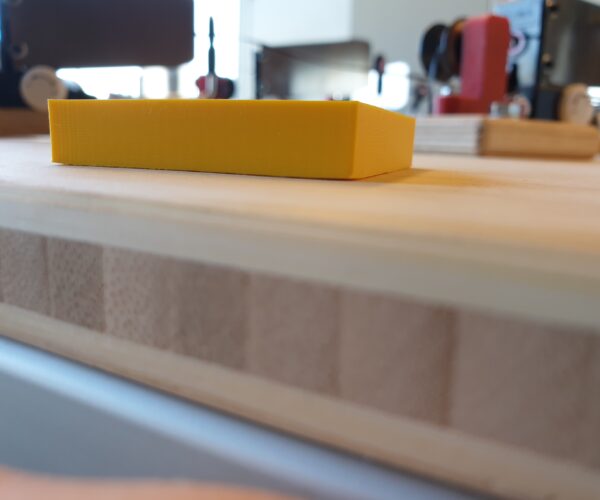Warping with PETG (Mango Yellow)
Hi,
I am trying to print PETG sample for my bechalor thesis. After some adjustments on the prusa MKE3S+ I have succesfully printed my samples with filaments as ASA, ABS, Colorfabb HT and PETG Carbon. Now I am trying to print a PETG sample, but I am struggling with warping. I have tried a lot with the setting from cold to very hot bed temperatur, cleaning the powder coated spring sheet, using a enclosure, different nozzle temperatur and different first layer height (0.2 mm and 0.3 mm).
My samples are 50 x 50 mm width and 10 mm height solid cuboids.
And my actual settings are:
Nozzle temp.: 230 Celsius
Bed temp.: 90 Celsius
Brim width: 10 mm
Draft shield: on (1 loop, 2 mm distance)
First layer hight and speed: 0.2 mm and 10 mm/s
Infill: 100%
with enclosure temp.: approximatly 30 Celsius.
As you seen in the picture, there is warping at the edges of the solid cuboid.
Do you have any suggestion what I could improve or change?
Thank you for any suggestions!
RE: Warping with PETG (Mango Yellow)
100% fill is usually a mistake in any but smaller objects. Unless you are for some reason collecting samples of why-not-to-do-it results you wold be better to use three or four perimeters and 10% - 15% fill.
Cheerio,
RE: Warping with PETG (Mango Yellow)
What @diem said, but this may not be enough . Warping is very common for large rectangular objects. I wouldn’t call 50x 50 large but who knows. Couple of things you can try:
— add mouse ears to the corners. Small, one layer high disks. You can do that in PrusaSlicer.
— add a brim around the whole model
— I’ve used Layerneer bed weld successfully to fight warping.
Formerly known on this forum as @fuchsr -- https://foxrun3d.com/
RE: Warping with PETG (Mango Yellow)
For your thesis you should include a section about how hard it is to print long solid cubes on a FFM printer. Hopefully you have a whole section about different printing challenges that require science (seeking to understand) to solve.
I hope your thesis isn't "I printed 10 different cubes in 10 different materials" - and didn't learn anything!
